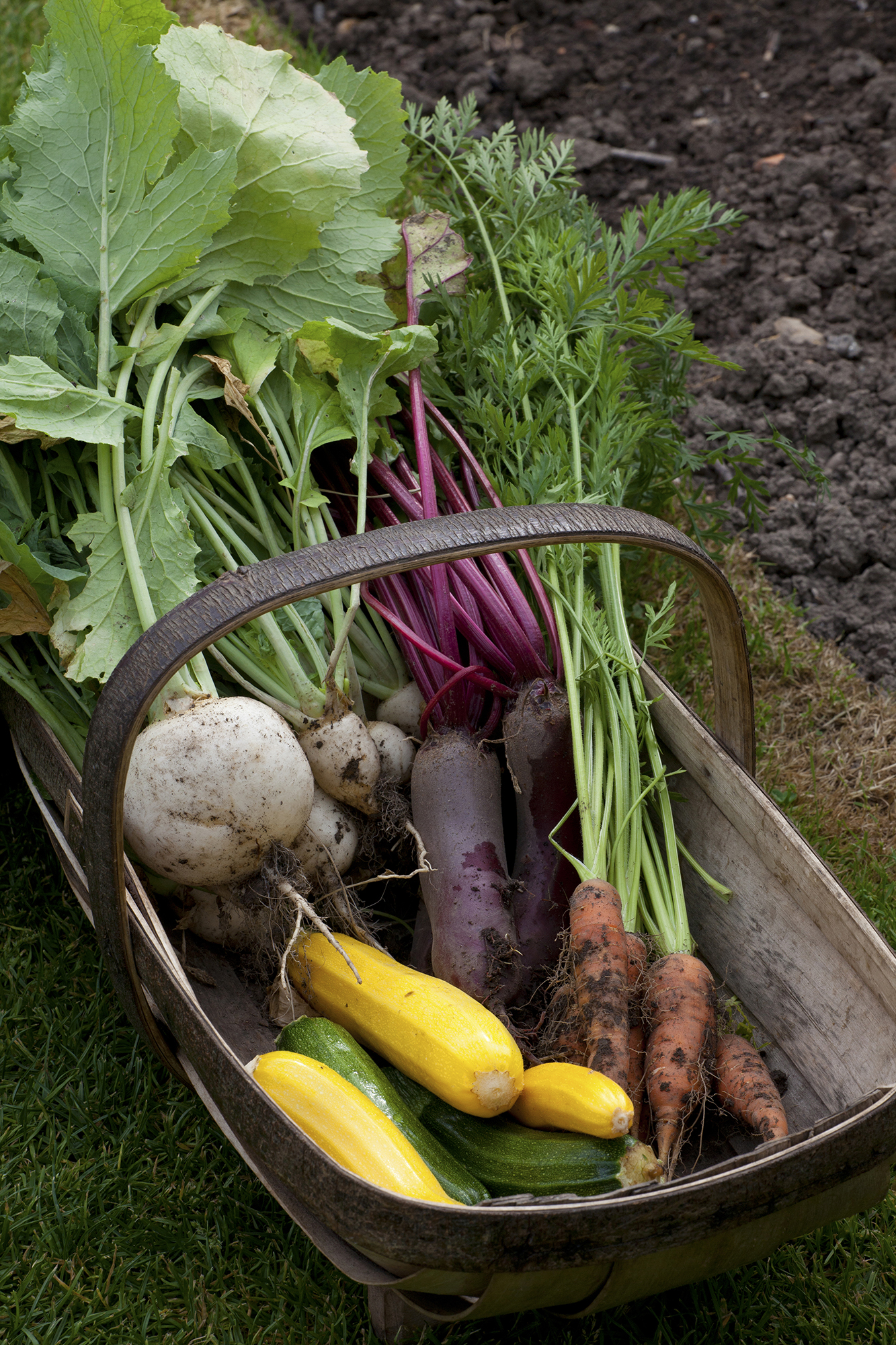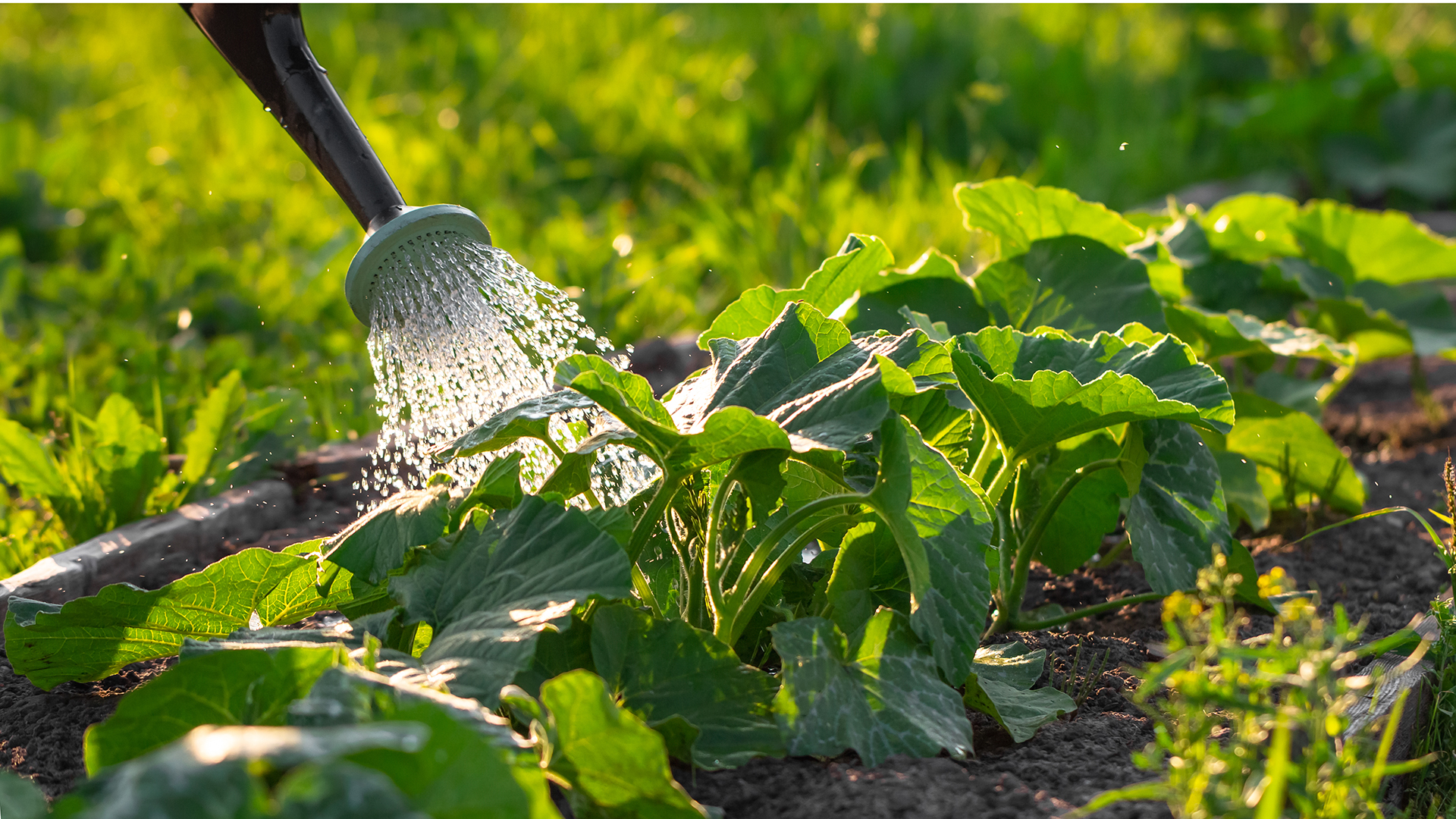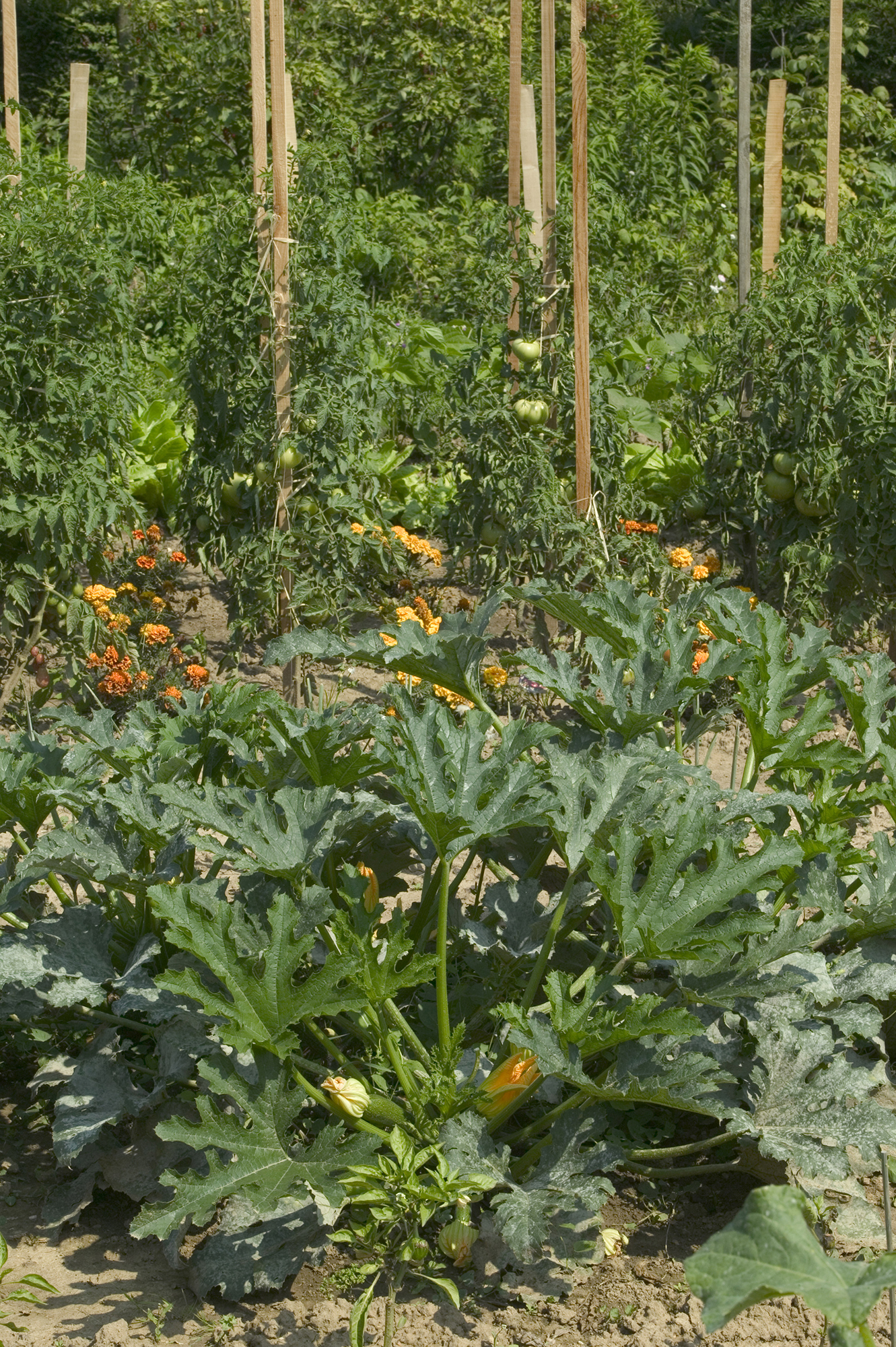How to grow zucchini – tips for growing courgettes at home
Find out how to grow zucchini at home – just a few plants will provide you with a bountiful harvest


Once you know how to grow zucchini, you will be literally inundated with the fruits of your labors.
A versatile vegetable that is super easy to grow and prolific in the garden, zucchini – or courgettes – fruit abundantly. They can be used as a staple of summer cuisine, from ratatouille to stir-fries, salads, casseroles, in vegetable lasagna, battered and fried, or even as zucchini pasta/courgetti. Added to which, you can harvest zucchini flowers that are delicious raw in salads, or stuffed and fried, too.
The most common types of zucchini plants produce green fruits, but you can also grow golden or bi-color zucchini varieties as part of your vegetable garden ideas to add even more color to your cooking.
'No home garden should be without these delicious, fast growing favorites,' says Chelsey Fields of seed and plant specialists Burpee.

How to grow zucchini
You can grow zucchini from seed, or from young plants if you want to be closer to harvest or are late planting them.
In fact, once you see how many fruits you can be harvesting on a weekly basis, you will wonder why you ever bought these vegetables from the supermarket. To get the best results learn when to plant zucchini.
There are vining types of zucchini that require a lot of room to sprawl, or you can grow the zucchini vertically as part of any vegetable garden trellis ideas. There are also bush types that are ideal for vegetable container garden ideas or small vegetable garden ideas.
Design expertise in your inbox – from inspiring decorating ideas and beautiful celebrity homes to practical gardening advice and shopping round-ups.
Ideally, match the courgette variety to the space in which you intend to grow them.

Is zucchini easy to grow?
Growing zucchini couldn't be easier.
'Zucchini is one of the easiest and most productive vegetable crops you can grow. You harvest the fruits when they are still young and tender, and plants will keep producing into late summer if zucchini are continuously picked,' says owner of Swallowtail Garden Seeds, Don Mcculley.
'In peak season, you could be picking several zucchini a day – more than enough to eat, freeze, and gift to friends and neighbors,' adds Amy Enfield of Bonnies Plants.

How to grow zucchini from seed
Zucchini are easy to grow from seed.
If you want earlier crops, or live in a cold region, you can sow the seeds indoors from mid to late April.
To start off zucchini from seed indoors:
- Fill individual 3in (7.5cm) pots with compost.
- Sow the seeds individually in pots, ½in (1.5cm) deep.
- Place in a sunny position.
- Keep well watered.
- Harden off the indoor raised plants – acclimatize them to outdoor conditions – before planting outside in June. Either move young plants into a coldframe for a week, or place outdoors during the day, then bring them in at night. The following week, leave them out in a sheltered spot day and night.
- Plant seedlings into the ground once the soil is at least 65–70°F (18–21°C).

You can also sow zucchini seeds outdoors in the spot where they are to grow once all chance of frost has passed – generally late May or early June.
In fact, 'because the seeds sprout and grow so quickly, there is really no need, even in the coolest gardening areas, to start seeds indoors,' argue the experts at Miracle Gro.
Zucchinis need lots of sun to grow well, so choose a sunny spot – that enjoys at least six to eight hours of sun a day.
'Be sure to choose an area where you did not plant squash or related crops within two years,' advises Chelsey Fields.
For instance choosing a patch where you had previously grown onions, or winter spinach would work well – as these are also crops that need a sunny spot in well-draining soil.

- Sow zucchini/courgette seeds directly in the garden in rich and fertile, warm soil.
- Prepare the soil beforehand by digging in some good compost or well rotted manure.
- Sprinkle a general purpose fertiliser over the soil at a rate of two handfuls per square yard/meter.
- Allow plenty of growing space for vining varieties of zucchini.
- For improved drainage sow the zucchini seeds in mounds, or hills of soil 12in (30cm) in diameter, 6-8in (15-20cm) tall.
- Sow 1-2 seeds about 3-4in (7-10cm) apart.
- Cover with 1in (2.5cm) of fine soil.
- Keep the soil moist.
- Seedlings should emerge in 10-14 days.
- Zucchini plants grow rather large, so thin to 2-3 foot apart when seedlings have two sets of leaves and reach about 4-6in in height.
- For best growth and a big harvest, feed zucchini plants with a continuous-release fertilizer.
When planting out or thinning zucchini seedlings in sunny weather, 'you can cover them with an upside-down flowerpot or other shade cover for a couple of days after transplanting to help prevent them from wilting,' advises Amy Enfield

Looking after zucchini plants
'They say about zucchini, “plant it and stand back.” The fast-growing plants are very easy to grow and will continue to produce abundantly through summer if kept picked,' says Amy Enfield of Bonnies Plants.
That said, zucchini plants have a shallow root system so need to be watered regularly. Mulching around the plant will also help retain soil moisture. 'The zucchini plants and fruit have a high water content, so it's critically important not to let them dry out,' says Chelsey Fields.
Because disease can spread easily across zucchini plant leaves, 'if you water with overhead sprinklers, water early in the day so the zucchini plant leaves have time to dry off before evening, to minimize disease problems. Keep the soil moist but not saturated,' she adds. A good sign that there is something wrong with your zucchini plants is if the zucchini leaves are turning white. You can prune zucchini leaves that are old and diseased to help keep the plants healthy.
Top tip: Plant a 6in (15cm) pot into the ground alongside the zucchini plant and water into the pot, so the water goes down to the roots of the zucchini plant and doesn’t sit on the surface where it could cause rot.
It is also important to keep weeds under control so that they don't compete with the zucchini plants for water, space and nutrients. Mulching will also help to suppress weeds.

Growing zucchini in pots
You can also grow zucchini in large containers or growing bags. Ideally, the pots need to be at least 18in (45cm wide). Plant two or three courgette plants per bag, and one or two per container. Bush varieties of zucchini work best grown in a container.
- Plant the zucchini seeds in the pots – one or two seeds per pot – filled with multi-purpose compost and cover with a thin layer of compost or vermiculite.
- Place in a sunny, sheltered position and keep well watered.
- Feed zucchini plants with a continuous-release fertilizer or apply a weekly liquid tomato feed to plants once they start to flower. It is important to feed crops in pots as a lack of nutrients can cause a zucchini plant to turn yellow.
Harvesting zucchinis
To keep zucchini plants producing, harvest the young fruit regularly.
Harvest when fruits are small and the skin is shiny. 'If the fruit is allowed to mature then the plant may stop producing,' advises Chelsey.
Courgette fruits are at their best when they are around 4-6in (10-12cm). Left to grow much longer they will lose texture and flavor, and fruiting potential of the plant will be reduced.
'Wear long sleeves when harvesting zucchinis as some varieties have spiky hairs on their stems which can cause irritation while working with the plants,' advises Kris Collins from seed suppliers Thompson & Morgan
'Use a sharp clean blade to cut the fruits from the plants,' he says.
And in the event you find yourself with a bumper crop, 'courgette pickles are easy to make, or you can grill marinated slices before storing them in your freezer, ' advises Amy Enfield.

What can you not plant near zucchini?
There are some vegetables that should not be planted next to each other as they do not work well as for companion planting purposes.
Plants that do not work well planted alongside zucchini include:
- Potatoes - as they are heavy feeders, so will steal the nutrients in soil and impact the growth of the zucchini.
- Fennel - while it attracts beneficial insects, will impede the growth of the zucchini plants.
- Pumpkins - are in the same family as zucchini, so can cause problems with cross-pollination.

What are good companion plants for zucchini?
There are many good zucchini companion plants that help to produce a better harvest.
For instance, 'peas and beans are good companion plants for zucchini because they fix nitrogen into the soil. Radishes can help deter cucumber beetles,' says Chelsey Fields
Squash plants are 'dioecious' having both male and female flowers on the same plant. Male flowers will open first and the female flowers will open later. You need both to make fruit.
Zucchini flowers are insect pollinated, so attract bee pollinators by planting some plants for pollinators nearby to attract the insects.
'More bees mean more chances flowers will be pollinated and develop into fruits,' Chelsey adds.
This feature was created by H&G sister brand, Period Living magazine
Subscribe to Period Living magazine for more inspiration
Period Living is the UK's best-selling period homes magazine. A subscription provides you with all you need to know about caring for and improving a traditional house and garden.
Rachel is senior content editor, and writes gardening content for homesandgardens.com, Homes & Gardens magazine, and its sister titles Period Living Magazine and Country Homes & Interiors. She has written for lifestyle magazines for many years, with a particular focus on gardening, historic houses and arts and crafts, but started out her journalism career in BBC radio, where she enjoyed reporting on and writing programme scripts for all manner of stories. Rachel then moved into regional lifestyle magazines, where the topics she wrote about, and people she interviewed, were as varied and eclectic as they were on radio. Always harboring a passion for homes and gardens, she jumped at the opportunity to work on The English Home and The English Garden magazines for a number of years, before joining the Period Living team.

